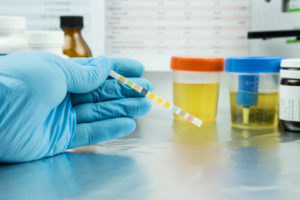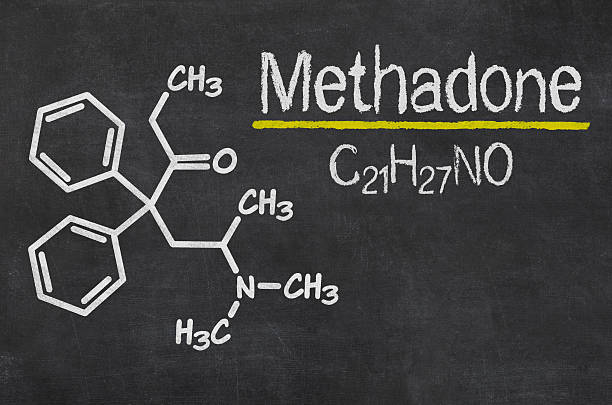Have you ever wondered what is MTD on a drug test? Let’s check this article out so we are informed.
What Is MTD On A Drug Test?

MTD is an abbreviation for methadone, which is a medication used to treat pain and addiction. It can be prescribed by a doctor or obtained through a treatment program. MTD is detectable in urine, blood, and hair tests.
Methadone is a synthetic opioid that is similar to morphine. It is typically used to treat pain that is not responsive to other medications. It can also be used to wean people off of heroin and other opioids. Methadone maintenance treatment (MMT) programs use methadone to help people stay off of illegal drugs like heroin.
MTD can cause false positives on drug tests for opiates. This means that people who take methadone may test positive for opiates even though they have not used them. This can cause problems for people who are required to take drug tests, such as employees or those on probation.
The best way to avoid a false positive on a drug test is to let the testing facility know that you are taking methadone. They can then use a different type of test that will not show up methadone.
MTD is a medication that has many uses. It can help treat pain and addiction, but it can also cause problems for those who take drug tests. If you are taking methadone, be sure to let the testing facility know so they can use the right type of test.
Related Item: What Is RTC In Medical Terms?
What Are The Side Effects Of MTD?

Methadone can cause side effects including constipation, drowsiness, and dizziness. It can also interact with other medications. Be sure to talk to your doctor about all the potential risks and side effects before starting methadone treatment.
Kinds Of MTD Tests
Several types of tests can be used to detect methadone in the body. These include urine, blood, and hair tests.
- Urine Test: A urine test is the most common type of drug test. It can detect methadone for up to 3 days after use.
- Blood Test: A blood test can detect methadone for up to 24 hours after use.
- Hair Test: A hair test can detect methadone for up to 90 days after use.
How Long Does MTD Stay In Your System?
Methadone can stay in your system for up to 3 days. This means that if you take a urine test, it will likely show up positive for methadone. If you take a blood or hair test, methadone can be detected for up to 24 hours and 90 days, respectively.
You Might Like: What Is TCA On A Drug Test?
Taking MTD
Methadone is a medication that is taken orally. It can be taken in the form of a tablet, liquid, or injection.
- Tablet: Take this form of methadone with or without food.
- Liquid: Take this form of methadone with food.
- Injection: This form of methadone is injected into a muscle.
Methadone Dosing

The dose of methadone varies depending on the person and the condition being treated. Be sure to follow your doctor’s instructions when taking methadone.
- Missed Dose: As soon as possible after missing a methadone dose, take it. The missed dose can be skipped if it is nearly time for your next scheduled dose. It is not recommended that you take two methadone doses at once.
- Storage: Store methadone at room temperature away from light and moisture.
Methadone Overdose
An overdose of methadone can be deadly. If you think you or someone else may have overdosed on methadone, call 911 immediately. Symptoms of a methadone overdose include slow breathing, cold skin, and coma.
Methadone Withdrawal
Methadone withdrawal symptoms can include anxiety, sweating, nausea, and vomiting. These symptoms typically begin within 24 hours after the last dose of methadone and can last for several days.
Interesting Read: What Is BUP On A Drug Test?
How To Help With Methadone Withdrawal
There are several things that you can do to help ease the symptoms of methadone withdrawal. These include:
- Get plenty of rest
- Drink lots of fluids
- Eat a healthy diet
- Avoid caffeinated beverages and alcohol
- Exercise regularly
- Take over-the-counter medications such as ibuprofen and acetaminophen for pain relief
- Attend a methadone support group or twelve-step program like Narcotics Anonymous
What Is The Safe Dosage For MTD?
The safe dosage of methadone varies depending on the person. Be sure to follow your doctor’s instructions when taking methadone.
Methadone can be addictive, so it is important to take it only as prescribed by your doctor. Do not take more or less methadone than prescribed.
Do not stop taking methadone suddenly, as this can cause withdrawal symptoms. If you need to stop taking methadone, your doctor will gradually reduce your dose over time.
Good Reads: What Happens If You Double Dose Antibiotics?
Key Points
- MTD is a medication that is used to treat pain and addiction. It can be taken in the form of a tablet, liquid, or injection.
- Methadone can stay in your system for up to 3 days. This means that if you take a urine test, it will likely show up positive for methadone.
- If you miss a dose of methadone, take it as soon as possible. The missed dose can be skipped if it is nearly time for your next scheduled dose.
- Methadone withdrawal symptoms can include anxiety, sweating, nausea, and vomiting. These symptoms typically begin within 24 hours after the last dose of methadone and can last for several days.
Bottom Line
Methadone is a painkiller and an addiction treatment. Hair, blood, and urine tests can detect it. Methylphenidate is an opioid agonist that can produce false-positive results on drug tests. Informing the testing facility that you are on methadone is your best bet in avoiding a false-positive result. MTD is a painkiller and an addictive substance abuse treatment drug. It is available as a tablet, a liquid, or an injection form.
For up to three days, methadone can be found in your system. As a result, a urine test for methadone will likely come back positive.
As soon as possible after missing a methadone dose, take it. The missed dose can be skipped if it is nearly time for your next scheduled dose.
Methadone withdrawal can cause anxiety, trepidation, sweating, nausea, and vomiting, as well as other symptoms. When methadone is stopped, these symptoms usually begin within 24 hours and last several days.
Methadone withdrawal symptoms can be alleviated by following a few simple guidelines. Included in this list are the following: getting enough sleep; drinking plenty of fluids; eating healthily; abstaining from caffeinated beverages and alcohol; exercising regularly, and taking pain relievers such as acetaminophen and naproxen sodium.
Methadone’s safe dosage varies from person to person. When taking methadone, always do as directed by your physician. Because methadone has the potential to become addictive, patients should only take it under the guidance of a physician. Stopping methadone abruptly can lead to unpleasant withdrawal symptoms. Your doctor will gradually decrease your methadone dosage if you need to stop taking it.
